

exploring the history and natural world of Lindisfarne
"For, with the flow and ebb, its style varies from continent to isle; Dry shod, o'er sands, twice every day, The pilgrims to the shrine find way; Twice every day, the waves efface of staves and sandall'd feet the trace." ... Sir Walter Scott
The Pilgrims Way is the old waymarked safe crossing point to the tidal island of Lindisfarne, also known as Holy Island, off the NE coast of the UK. The eponymous opening track of this instrumental music project acts as a musical gateway to explore the history and natural world of this magical place.
Welcome to 'The Pilgrims Way' website. This is a collection of instrumentals in various styles, including orchestral elements, exploring the varied history and natural world on the island of Lindisfarne. These are all original compositions using acoustic and electric guitar (sometimes using altered tunings), bouzouki, low and high whistles, bodhrán, occasional voice (mainly as Foley sounds ) and MIDI instrumentation for the orchestral and ad-hoc synthesizer elements.
The project started in 2018 with the first eponymous track. With the completion of the final piece in 2023, 'Causeway Dreams' , a full album of material is finally in place.You can check out all the tracks of the project via this website, or you can hear them on SoundCloud. Just click on the bouzouki image above. SoundCloud will open in a new browser tab on your device. If you choose to visit SoundCloud you can listen to my full collection of songs, instrumentals and orchestral pieces charting my adventures in home studio recording and production. Over the last few years the orchestral side of things has been a real focus for me and the experience gained has fed back into this more folk-based project too. :-)
ALBUM TRACKS
Here are all 10 tracks of the upcoming album.
Tracks 1 to 4 have now been remastered for album release.
Click on a player to play a selected track. You can control the overall volume using the volume control.
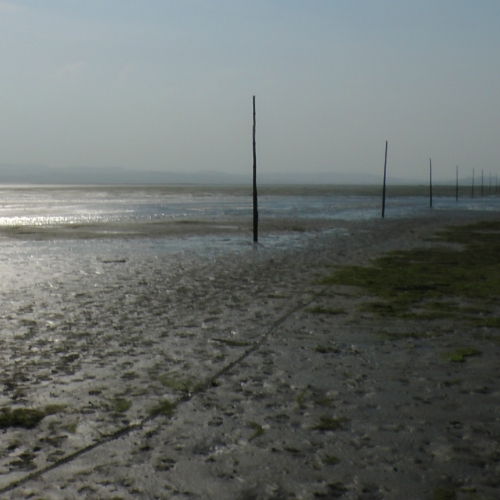
Track 1 - The Pilgrims Way
Lindisfarne has always held a special fascination for my wife and I, so it is no surprise to me that I would eventually create some music about it. Hopefully you can be swept away by the music but not the tide ;-)
This track is now the first track of the "The Pilgrims Way Project" exploring the history and natural world of Lindisfarne.
Ever since 635, when King Oswald gave the Holy Island of Lindisfarne to St Aidan to establish his monastery, the island has been a place of pilgrimage. The road was not constructed until 1954 and until then the vertical poles were the only indicators of the safe route between the mainland and island. The sight of the poles stretching across the sand and mud is one of the most iconic views in Northumberland and to walk the route away from the road and follow in the footsteps of our medieval ancestors is a wonderful experience.
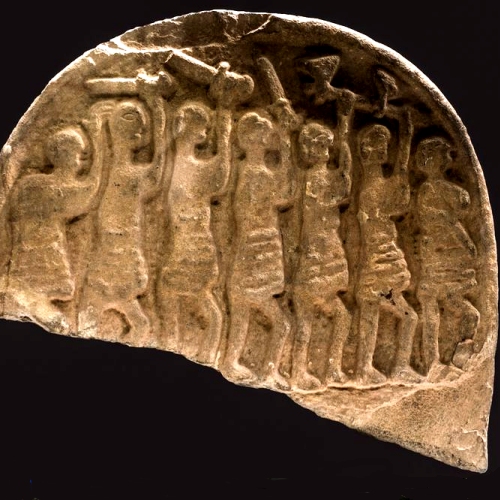
Track 2 - The Vikings
"A furore Normannorum libera nos, Domine - From the fury of the Northmen deliver us, O Lord"
Simeon of Durham recorded the grim events of the Viking attack on Lindisfarne in 793 AD
"And they came to the church of Lindisfarne, laid everything waste with grievous plundering, trampled the holy places with polluted feet, dug up the altars and seized all the treasures of the holy church. They killed some of the brothers; some they took away with them in fetters; many they drove out, naked and loaded with insults; and some they drowned in the sea".
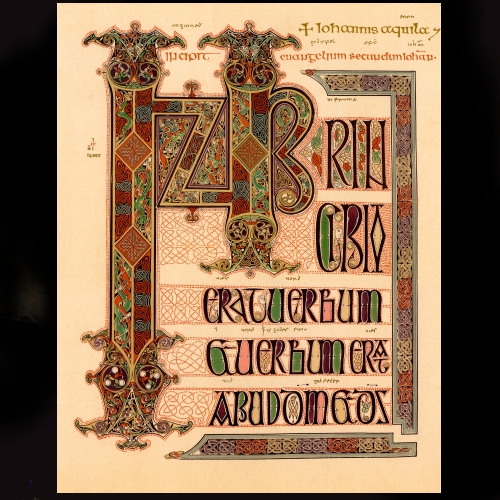
Track 3 - A Light In The Darkness
An Irish-tinged tune about the Lindisfarne Gospels to reflect the Irish foundations of the community despite the later Romanisation of the Celtic church.
The track title comes from me thinking about it being a beacon of civilisation, a rallying point, during the Early Middle Ages whist a far chunk of the UK was under Viking rule and Christianity had again been pushed to the margins of the UK.
The Lindisfarne Gospels is an illuminated manuscript gospel book probably produced around the years 715-720 in the monastery at Lindisfarne, off the coast of Northumberland, which is now in the British Library in London. The manuscript is one of the finest works in the unique style of Hiberno-Saxon or Insular art, combining Mediterranean, Anglo-Saxon and Celtic elements.
The Lindisfarne Gospels are presumed to be the work of a monk named Eadfrith, who became Bishop of Lindisfarne in 698 and died in 721 AD.
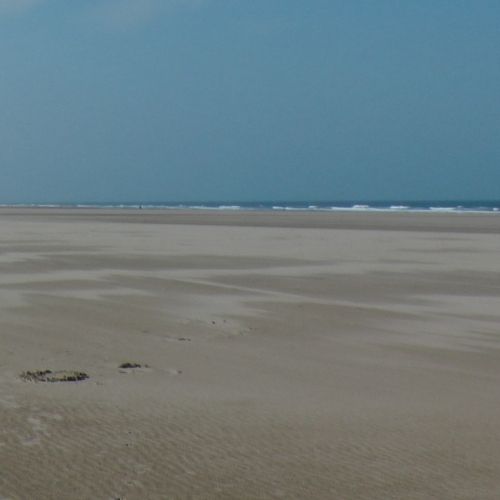
Track 4 - The North Shore
With The North Shore I hope to give a feel of that 'magical interface' between land and sea, a place apart from the hustle and bustle of life where your soul can find peace for a while. A natural world full of wonder for those with the time and inclination to see.
The 'semi-hidden' North Shore of Lindisfarne is driven past by tourists every day, eager to see the 'sites' of the Island in their race against time before the tide cuts them off from the mainland. It is part of the Lindisfarne Natural Nature Reserve and its shifting sands and tides combine to create the 3500 hectares of dunes, saltmarsh and mudflats of the Reserve, home to a fascinating array of birdlife, seals, rare orchids and other wildlife. To experience it you need to spend time on the island, either by choosing to be cut off by an early tide or ideally stay on the island for a while.
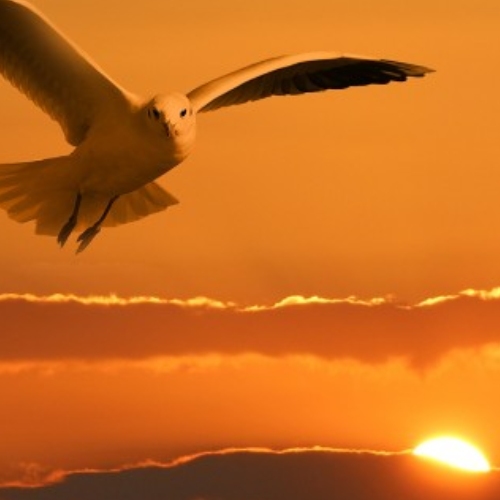
Track 5 - Flight Of Fancy
This track is dedicated to the memory of Chris A and the time that was 'Elidor'. "I hope you are flying somewhere with that big grin on your face"
This track was very much a collision of ideas. I wanted to follow on from The North Shore and actually take the listener into the air to experience the feeling and freedom of flying like a bird. Additionally the track title "Flight of Fancy" was the title of an original instrumental played by a band I was in in the early 80's. The keyboard player in that band is sadly no longer with us, so I decided to try and reinvent the spirit of that time as a musical tribute to Chris.
Enjoy your Flight of Fancy :-)
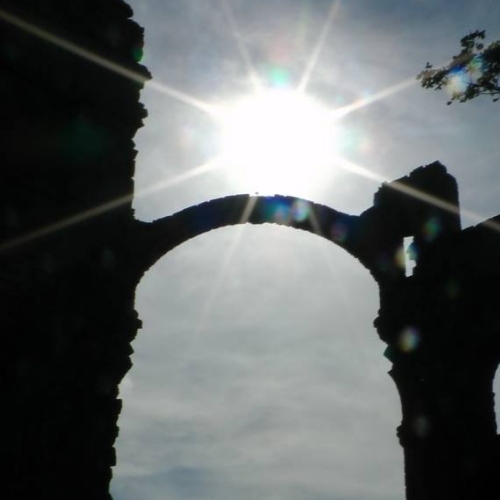
Track 6 - The Rainbow Arch
The surviving medieval priory Lindisfarne is the focus for this track. The priory was re-established in Norman times in 1093 as a Benedictine house and continued until its suppression in 1536 under Henry VIII. The original priory of St Cuthbert's time was long gone by then following the location of the relics of the saint as a result of the Viking scourge.
Inspired by "The Rainbow Arch", the track takes it's name from this surviving rib of the crossing vault that survived when the tower above it collapsed. The photo of this arch was taken on one of my visits to Lindisfarne.
"The bell is rung for mass and the monks assemble. Whilst singing the chant they gaze up at the rainbow arch and their spirits soar."
I wanted to get inside the feeling of the monks in this holy place and was inspired by the surviving rainbow arch to do multiple parts singing the 'Kyrie Eleison' with different vocal timbres and link that into a rapture type section.
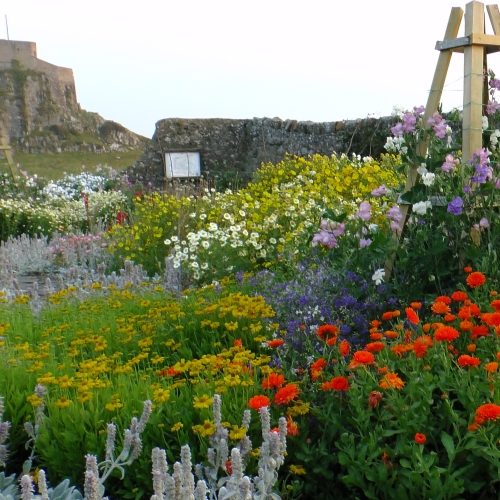
Track 7 - By Castle Walls
By Castle Walls - 2019
"When Summer sun shines on your face
By Castle Walls I feel your grace
When bees alight on golden thrones
By Castle Walls 'twixt sea and stone"
The Gertrude Jekyll garden, near to Lindisfarne Castle is the focus of this track. Now owned by the National Trust, originally it was a walled garden that was first constructed by troops manning the castle, presumably as far back as the 1500s or 1600s, to grow food.
In 1902, the Country Life magazine founder and owner Edward Hudson took out a lease from the Crown on Lindisfarne Castle and commissioned his friend, the architect Edwin Lutyens, to transform the Castle into a holiday home in which Hudson could entertain during his summer visits.
In 1911, Hudson decided to restore the old walled garden to use as a place to enjoy. Lutyens brought in his regular collaborator, Gertrude Jekyll to undertake the design work.
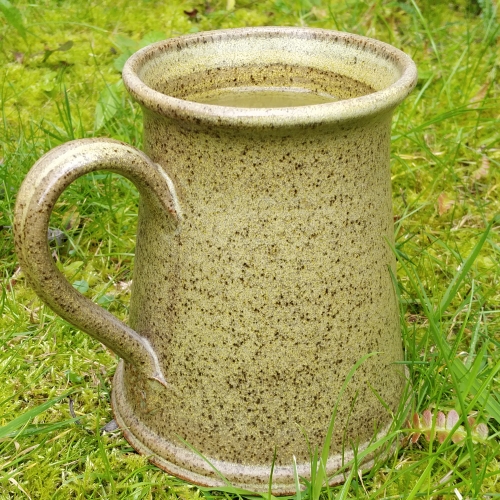
Track 8 - A Taste Of Metheglin
This Cinematic-style Celtic Fantasy is loosely based around an ancient Celtic gathering on Lindisfarne and had me researching the Common Brittonic language to get some interesting 'Foley' sounds. It was spoken in Britain and Brittany and eventually developed into Old Welsh, Cumbric, Cornish, and Breton. It also features my long suffering wife who over time has become a quasi- Foley artist and harmony part singer for me.
The Metheglin of the title is the oil that makes the celebration happen and is a type of spiced mead, so basically fermented honey with spices added. It also obliquely connects to Lindisfarne mead and also the bees featured in 'By Castle Walls'.
I wanted to get a sort of cinematic feel to be dropped into a Celtic Festival or feast day and I hoped the language and children's laughter would aid in the immersion. Finally in this project I get to do a fair bit of bouzouki playing which was a plus.
So hopefully you will enjoy the feast .... "búwa slanos ac swos"
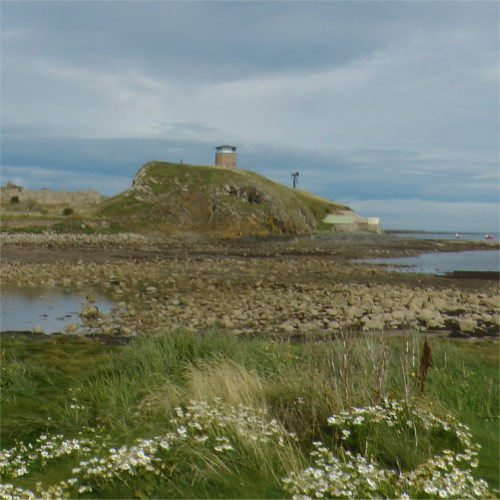
Track 9 - High On THe Heugh
On Lindisfarne, there is a ridge of land called 'The Heugh' made out of unyielding igneous rock. It is not particularly high but from this viewpoint you can see the Castle, the Abbey, St Cuthbert's Island, in fact most of the sights of the otherwise flat Lindisfarne. The old coastguard station is now an observation platform. I wanted to use this piece to describe the view as experienced by a modern tourist but also give a reflective nod to the old herring and general fishing industry of the past.
I wanted to start this piece with an ascent section so it includes a climbing motif that leads the listener up to the top of the Heugh. There they can reflect on the view of St Cuthbert's Island etc.
The next section introduces the idea of starting to think about the vanished fishing industry so I used the concertina, an instrument often used by sailors, to start painting this picture. It also adds in the bouzouki supporting the harp and supported by various strings.
Then it's into a hornpipe section and and it's a much more lively section as the listeners imagination takes free reign and features a bouzouki solo. It builds to a climax before the final melancholic reprise. This final reprise reflects upon this lost time as it guides the listener back to the present day.
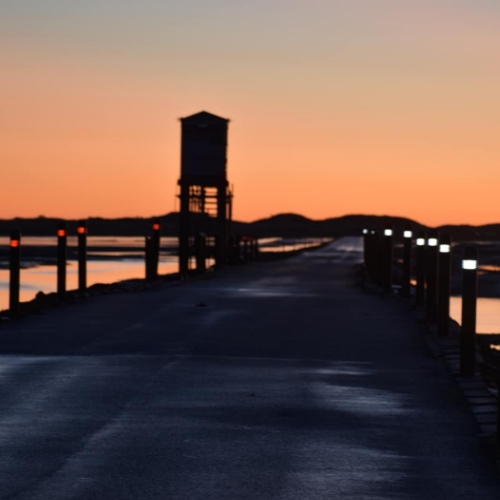
Track 10 - Causeway Dreams
This final track of the album acts as a bookend to the project, departing via the causeway after arriving over the sands in the first track, 'The Pilgrim's Way'.
The idea behind this piece is exploring the duality of the causeway and of Lindisfarne itself. Sometimes the causeway is below the water and sometimes above. Lindisfarne is in turn an island cut off from the modern world, then reconnected for a while before the cycle repeats itself.
Connection versus isolation, spiritual versus material, water and dry land in balance, governed by the ever changing tides. Even the concept of the water itself somehow holding echoes of past times and the call of of the natural world. This last idea is also a convenient way to reprise some of the 'Foley' sounds from the rest of the album, a worthy goal for the last track of this project. This piece is truly eclectic in nature so please enjoy the journey.
Photo by Paul Everitt ... "an early morning golden hour" of the Causeway. ( used with permission ). As I said to Paul "This picture of yours just seems to capture the spirit of the piece I'm creating".
PROJECT INFO
This section of the site goes into greater detail about background research, compositional decisions, instrumentation choices and some of the technical details about the project. It's amazing just how much thought can go into instrumental storytelling.
Background research is a key element of a project like this. It feeds into the composition process where you can add colour by the addition of interesting 'Foley' sounds and this can act as a catalyst for the creative process. Without words to tell the story it really is all about conjuring up mental imagery through the music. The composition process often runs in parallel with any research for a track. It's often a bit of a loop where you are feeling your way through the piece.
The idea of music depicting narratives and painting pictures goes back long before the Romantics – think of Vivaldi’s Four Seasons. Even for Aristotle, one of music’s valid functions was mimesis: ‘imitation’, even to the point of detailed storytelling. This idea has been taken even further in modern media, where the music really does become an essential part of the emotional arc of a story.
With 'The Pilgrims Way', there was actually very little research involved. Lindisfarne was a place both my wife and I loved and it was really created from a simple low whistle melody. I also included 'Foley' sounds to help in the immersion for the listener. Having got some initial positive feedback from some musical friends, I decided to try and create a series of pieces based around Lindisfarne. Given it's history and unique natural setting, there seemed plenty of material to go at.
'The Vikings' was in direct contrast to the dreamy first piece. I came across a Latin Phrase spoken by priests as a prayer of protection from the scourge of Viking raids. It helped me get into the mindset required for this piece. I chanced upon some 'Foley' material of some actual Viking re-enactors from freesound and used this to create a very short, brooding piece that explodes into an electric guitar solo before just being suddenly left with a voiceover of me chanting the Latin phrase against the backdrop of the sound of the sea.
Often Viking raids were short and bloody and I wanted to try and capture how an attack like this could change everything for the vulnerable monks. Faith was their shield but could it really protect them from these savages from the sea ?
'A Light In The Darkness' came about as a result of really getting into the religious history of Lindisfarne. Having read about the work of a monk named Eadfrith who is credited with creating the Lindisfarne Gospels, I really wanted to reflect on the original Irish foundations of the community despite the later Romanisation of the Celtic church. The track title comes about from me thinking about it being a beacon of civilisation, a rallying point, during the Early Middle Ages whist a far chunk of the UK was under Viking rule and Christianity had again been pushed to the margins of the UK.
Thinking Irish music lead to the inclusion of harp, bodhrán, uilleann pipes and a bit of whistle, all over a bed of strings and choir. The Foley sound of somebody writing with a quill pen set the scene and once I had the basic melody I was away. I took advice from a harpist on how they play chords and read up on Uilleann pipe drones too.
'The North Shore' came about as a contrasting natural world track to the previous more historical offerings. I really wanted to include a track focussing on this particular part of Lindisfarne. It is part of the island that is often overlooked by tourists if they are on a timescale dictated by the tides. The sand often flows in waves over the beach and my description of it as a magical interface' between land and sea, a place apart from the hustle and bustle of life where your soul can find peace for a while, is very apt.
I often enjoy creating guitar music based around altered tunings, particularly DADGAD, where the strings are tuned to different pitches. By using a technique of emphasising open string drones, it can create full and quite hypnotic patterns to the ear. Once this pattern was established, the use of low whistle, violin as a counter melody, strings, choir and supporting drones created a reflective atmosphere. Towards the end, I added a simple vocal phrasing that topped off the piece and the inclusion of 'suitable 'Foley' sounds completed the picture.
'Flight Of Fancy' was a pivotal moment for me as I started to incorporate a more hybrid orchestral feel into the material. This was in large part influenced by getting into composing orchestral pieces, reading books, watching online videos and undertaking some courses about orchestration.
It was very much a bittersweet track to create as the title harks back to an original instrumental played by a band I was in in the early 80's. The keyboard player of that band is sadly no longer with us, so I decided to try and reinvent the spirit of that time as a musical tribute to him. The main guitar figure is very close to the original one I created for that track.
The idea for the piece is based around the concept of flying like a bird, maybe from the North Shore itself and had me breaking the piece down into three sections. Even the concept of thinking of it as a piece as opposed to a track, was a mental shift into a more thematic orchestral way of thinking.
Sunrise (0:00 - 0:58) As the title suggests, it is my musical imagining of sunrise on the beach with all the grandeur of a new day dawning. A big orchestral sound and timpani seemed the way to go.
The Shoreline At Dawn (0:59 - 2:28) Part Two has a much more muted sound as nature begins to stir with the dawn and musically this part acts as a linking section between parts one and three.
Into The Air (2:29 - 6:42) Finally we are into the air and I wanted to give a feeling of flying by the use of rising chords sequences and a string ostinato (a recurring rhythmic or melodic pattern). I also wanted to give a nod to the original Flight of Fancy so it has a variation of the main guitar riff I played back in the early 80's, some interwoven guitar and keyboard parts and harmony with underlying jazzy drum and bass parts.
'The Rainbow Arch' again takes the listener into the history of the island by focusing on the surviving medieval priory on Lindisfarne. The title of the track is derived from the name given to a rib of the crossing vault that survived when the tower above it collapsed. You often need a focal point when composing and for me it's description and seeing it on a visit to Lindisfarne conjured up a religious and mystical sort of vibe.
I came up with a descriptive phrase, "The bell is rung for mass and the monks assemble. Whilst singing the chant they gaze up at the rainbow arch and their spirits soar". I wanted to get inside that feeling of the monks in this holy place and was inspired by this surviving archway to do multiple parts singing the 'Kyrie Eleison' with different vocal timbres and link that into a rapture type section.
A big use was made of pedal notes,and features strings, violin, flute, a choir backing, synthesizer pad (quite Floyd -like) and Uilleann pipes. There was no historical reason to use the pipes as the Irish monks were long gone. It was more to do with the mixture of sounds in this piece. It felt right to my ears.
'By Castle Walls' was another historically-based piece, this time looking at how the walled garden outside Lindisfarne came about.Now owned by the National Trust, originally it was a walled garden that was first constructed by troops manning the castle, presumably as far back as the 1500s or 1600s, to grow food.
In 1902, the Country Life magazine founder and owner Edward Hudson took out a lease from the Crown on Lindisfarne Castle and commissioned his friend, the architect Edwin Lutyens, to transform the Castle into a holiday home in which Hudson could entertain during his summer visits. In 1911, Hudson decided to restore the old walled garden to use as a place to enjoy. Lutyens brought in his regular collaborator, Gertrude Jekyll to undertake the design work.
In my head I had the idea of trying to capture the feeling of guests of Hudson, (or modern day visitors) walking around the garden on a late Summer afternoon, possibly stopping to listen to the bees, busy at work, collecting honey.
The poem 'By Castle Walls' came out of that thought which then inspired the musical direction of the piece.
I imagined the first part, idyllic, tranquil, moving to section where you just focus in on the bees and everyday life slips away for a while. This is followed by a grander 'promenade ending', where I imagined Hudson's guests strolling around in the late afternoon sun.
The use of buzzing bees as a 'Foley' sound was again important in getting the listener into the first section before the grander ending.
'A Taste Of Metheglin' was really enjoyable to create and I loved getting this cinematic-style Celtic Fantasy together. I really got carried away with my research into the Common Brittonic language to get some interesting 'Foley' sounds. Since I wanted a family-vibe, it also features my long suffering wife who over time has become a quasi- Foley artist and harmony part singer for me to do the female parts.
The Metheglin of the title is the oil that makes the celebration happen and is a type of spiced mead, so basically fermented honey with spices added. It also obliquely connects to Lindisfarne mead and also the bees featured in 'By Castle Walls'.
I wanted to give the listener the feeling they had been dropped into an ancient Lindisfarne Celtic Festival or feast day and I hoped the language and children's laughter would aid in the immersion. Finally in this project I got to do a fair bit of bouzouki playing which was a nice bonus for me.
'High on the Heugh' was a way of bringing both historical and natural world elements into the same piece of music.
The initial ascent is all based around the climbing motif that takes the listener to the top of the Heugh. I quite often use the Alto Flute in my music, this time balanced against a Cello line to stop things becoming to light and airy. It acts to ground the listener, maybe even reflecting on the nature of the geology of the Heugh itself.
As I've acquired more experience in creating instrumentals I've really got into using discrete sections, even in a relatively short piece of music. The main focus of the piece, after the ascent, was based around thinking about the vanished fishing industry. The concertina was an obvious choice as a lead instrument to explore this idea as it was often used by sailors. An unusual choice of percussion at this point was the use of water pumpkins (water drums), for their earthy sound.
The hornpipe section is a much more lively section, including a bouzouki solo, supported by the driving pulse of the bodhrán before the final melancholic reprise. This final melancholic ending guides the listener back to the present day and also gives the track a pleasing story arc.
'Causeway Dreams' was a real challenge for me in some ways. I wanted to finish the album with a strong piece of music and somehow add in some material from previous tracks.
I hit upon the idea of using vocal snippets from earlier pieces, using the concept of the water itself somehow holding echoes of past times and the call of the natural world. It was a convenient way to reprise some of the 'Foley' sounds from the rest of the album, a worthy goal for the last track of this project.
As I've acquired more experience in creating instrumentals I've really got into using discrete sections, even in a relatively short piece of music. This was the approach taken with Causeway Dreams, leading to the headache of bringing together six different sections, each with their own character and instrumentation. In the end it was a bit of a devil to mix, but I feel it was worth the effort ;-)
The six sections are:-
1) Into the Depths - The journey begins by plunging the listener below the water of the covered causeway, an alien world where the natural world, history and spiritual feelings all fuse together in the restless sea. The power of the sea is very much a feature in this first section. There is peril for the unwary, man cannot control this element of nature, only react to it's moods.
2) In a Place of Wonder - This lighter section featuring harp and flute introduces a feeling of wonder as you remain below the water with the creatures that call the sea their home.
3) Island Echoes - Still below the water you begin to hear echoes of 'Foley' sounds from previous tracks in the project brought together in this underwater realm, suggesting a merging of history and nature, an 'island memory', captured in the surrounding water of the island. At the end of this section you begin to ascend back towards the emerging causeway.
4) A Meeting of Worlds - As you emerge from the water you are in that moment of balance between the two worlds. The voice you first heard in 'The Pilgrims Way' is ready to lead you home. This section is very short, but also very important, as it acts as a musical nexus or balance point in the whole piece of music.
5) Travelling Home - As the sea finally recedes, the rolling feel of acoustic DADGAD guitar and low whistle feature to lead the listener as you travel across the now fully uncovered causeway back towards the Northumbrian mainland.
6) The Call of the Coast - As you travel further along the causeway, you hear the sound of Northumbrian pipes over a boisterous bodhrán backing. The mainland is calling to you but the voice you first heard in the Pilgrims Way soars as a final reminder of this special place. I wanted to get a contrast to the smallpipes and the use of voice in this final section was a good emotional and also mixing choice as they complemented each other.
Given the number of years this project has taken, it is fairly obvious that there would be an evolution in technical proficiency and equipment as the project progressed. It might not be obvious to the casual listener but I can certainly detect these changes as you move though the material. This is the well known challenge of musicians revisiting their older work. It is very tempting to engage in extensive remixing of this 'older stuff', especially if you have developed new insights or skills in music production. I am hoping to not engage in this but I will probably look at a few tweaks here and there and an overall re-mastering of the material to make it sound like an album and not just a loose collection of songs.
As I added more tracks I started to establish an overall feel with my instrumental choices, restricting my palate in this way was a conscious choice. Things like reusing the same choir VST library, the use of signature instruments like low whistle etc helped develop a recognisable thread from track to track. The variety was more about the subject matter and overall composition than the instruments employed.
One big change was the increasing use of orchestral elements as I gained a greater proficiency in orchestration. The more folk feel of the earlier tracks gently morphs into more hybrid orchestral particularly from 'Flight Of Fancy' onwards. This was in some part due to the nature of that particular piece and wanting to have a grand sunrise at the start of it.
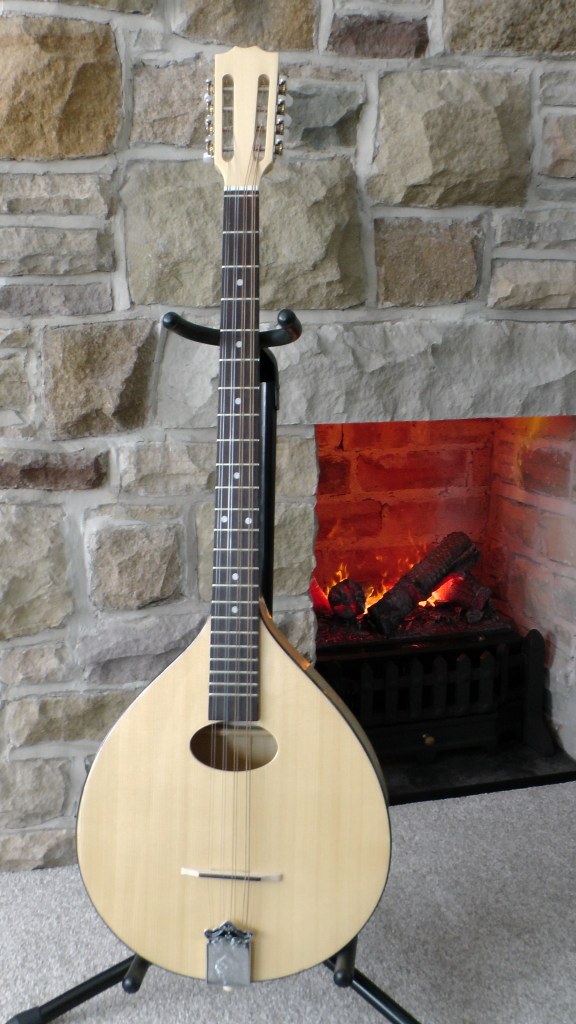
It is difficult to list all the VST (Virtual) instruments used in the project. However, extensive use was made of Kontakt, Steinberg Halion / Groove Agent and Vienna VSL instruments. My main 'virtual' orchestral instruments are those produced by Chris Hein, supplemented by Vienna (VSL). Certainly my knowledge of classical orchestration as a result of courses etc. has lead me to creating orchestral tone poems and other hybrid orchestral instrumentals using MIDI instrumentation. This experience has certainly fed back into some of the later tracks of this project.